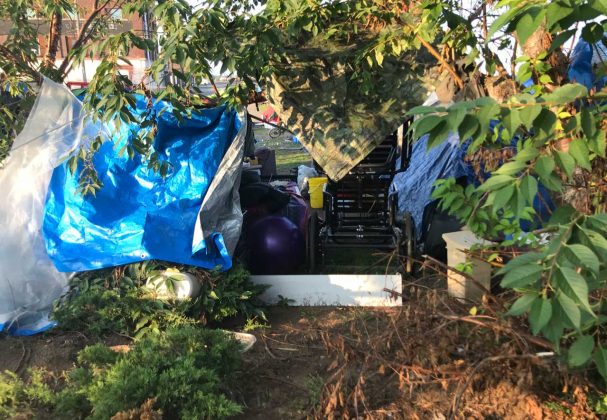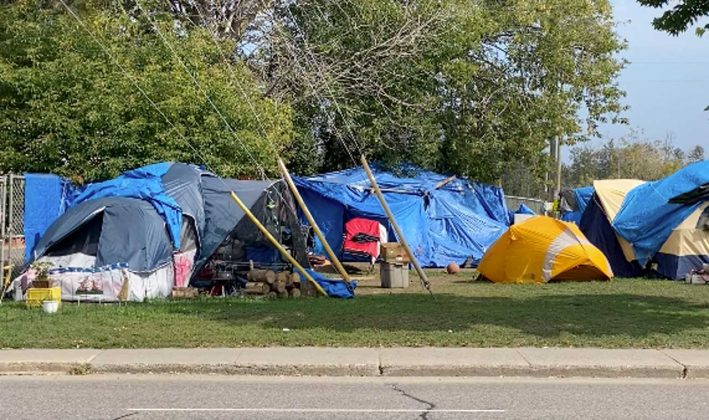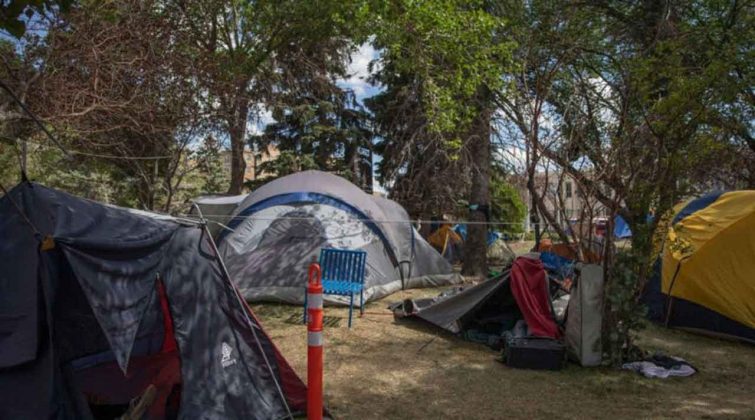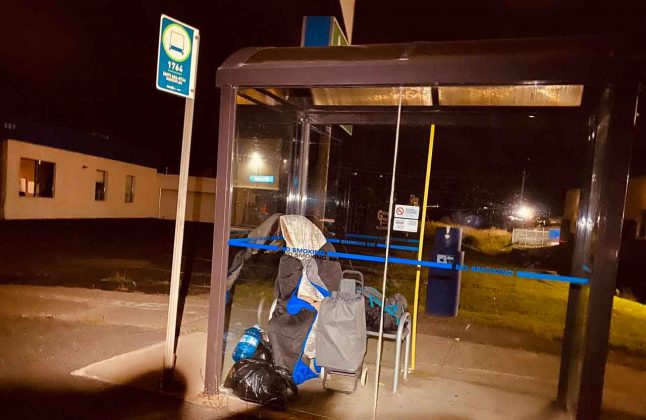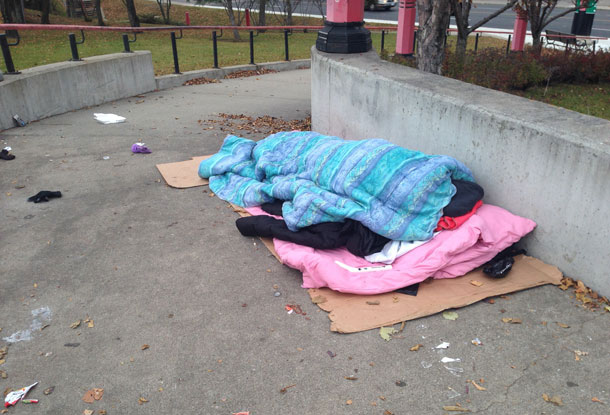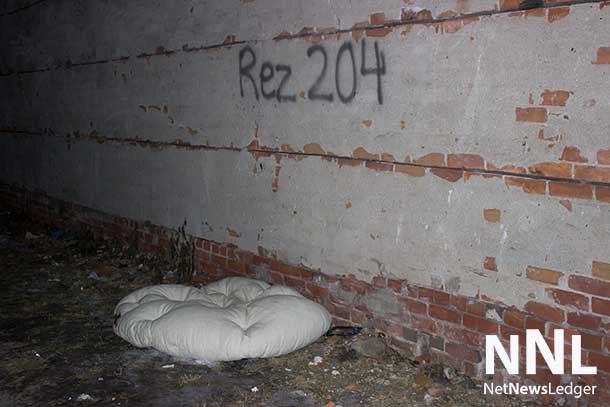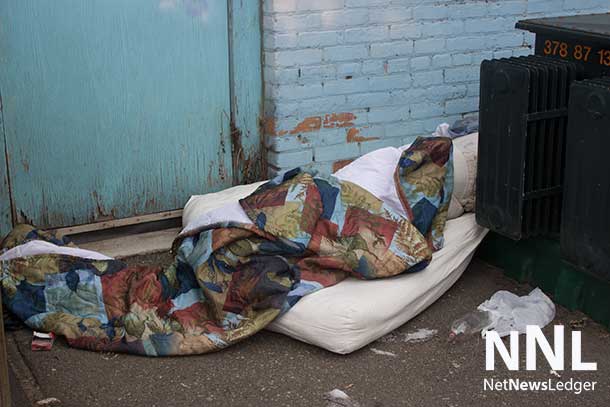Tent Encampments Multiply Across Thunder Bay
THUNDER BAY – SOLUTIONS – This summer, Thunder Bay has witnessed a surge in tent encampments, with up to 80 tents cropping up along Donald Street, a stone’s throw from City Hall, as well as along the scenic boardwalk at Kam River Park.
To the east of Cumberland Street, a fairly permanent encampment has taken root, accommodating tents that have emerged in numbers as high as 30, while a smaller tent city has nestled itself behind the Grandview Arena. While these encampments are visible signs of homelessness in the city, the problem seems to simmer beneath the surface, failing to take center stage on the city’s agenda.
The issue is not new, there have been people sleeping on the streets in our city for years. However since the COVID-19 pandemic and the growing housing shortage and as prices for everything have climbed, the problem is far more obvious today than in past years.
The Invisible Costs of Homelessness
Beyond the visible hardships of tent encampments and individuals struggling on the streets, Thunder Bay bears a hidden burden associated with homelessness. This burden manifests in the form of increased healthcare costs, rising policing and first responder expenses, and a host of other social challenges that demand our attention.
Escalating Healthcare Costs
Homelessness in Thunder Bay contributes significantly to escalating healthcare costs. Individuals experiencing homelessness often face harsh living conditions, malnutrition, and limited access to sanitation. These factors lead to a higher prevalence of physical and mental health issues, including chronic illnesses, substance abuse disorders, and mental health disorders. As a result, homeless individuals frequently rely on emergency room visits and hospitalizations, driving up healthcare expenditures for the city.
Straining Policing and First Responder Resources
Homelessness places an additional strain on Thunder Bay’s policing and first responder services. Police officers and first responders are frequently called upon to address issues related to homelessness, including disputes among individuals living in encampments, drug-related incidents, and medical emergencies. These calls divert resources away from other critical public safety matters and can contribute to burnout among law enforcement and first responders.
Finding Solutions to End Homelessness
Addressing homelessness in Thunder Bay is not just a moral imperative; it’s also a cost-effective strategy. By investing in solutions to end homelessness, the city can reduce healthcare costs, alleviate the burden on law enforcement and first responders, and create a more compassionate and inclusive community.
Solution 1: Affordable Housing Initiatives
One of the primary steps towards ending homelessness is the expansion of affordable housing initiatives. Thunder Bay should invest in the development of low-income housing projects and offer rent subsidies to individuals and families at risk of homelessness. Stable housing provides a foundation for individuals to address their health issues and regain their independence.
Solution 2: Wraparound Support Services
To address the complex needs of homeless individuals, the city should establish comprehensive wraparound support services. These services should include mental health counselling, addiction treatment, job training, and access to medical care. By addressing the root causes of homelessness, Thunder Bay can reduce the strain on the healthcare system and emergency services.
Solution 3: Collaboration with Nonprofits and Community Organizations
Collaboration with nonprofits and community organizations is vital in the fight against homelessness. Thunder Bay should partner with these entities to provide outreach, case management, and assistance with accessing housing and services. These organizations often have the expertise and resources needed to make a meaningful impact.
Solution 4. Engaging with the Province and Federal Government
Provincial and federal governments in Canada have various supports and programs aimed at reducing homelessness. These programs often work in collaboration with municipalities and community organizations to address the complex issue of homelessness. Here are some of the key provincial and federal supports available:
Federal Supports:
- Reaching Home: Reaching Home is the federal government’s homelessness strategy. It provides funding to communities across Canada to support local initiatives aimed at preventing and reducing homelessness. This program focuses on Housing First approaches, which prioritize providing stable housing as a first step, followed by support services for individuals experiencing homelessness.
- National Housing Strategy: The National Housing Strategy is a comprehensive federal initiative designed to address housing affordability and reduce homelessness. It includes programs like the National Housing Co-Investment Fund, which supports the construction and repair of affordable housing units.
- Homelessness Partnering Strategy (HPS): While the Homelessness Partnering Strategy is now a part of Reaching Home, it was a key program that supported community-based initiatives to reduce homelessness, including shelters, outreach services, and supportive housing.
- Canada Housing Benefit: This federal benefit program provides financial assistance to low-income individuals and families to help them afford suitable and stable housing. The program is designed to prevent homelessness by ensuring that people can access and maintain housing.
Provincial Supports:
- Provincial Housing Programs: Most provinces in Canada have their own housing programs and initiatives aimed at increasing affordable housing stock and reducing homelessness. These programs may include rent supplements, subsidies, and incentives for the construction of affordable housing.
- Social Assistance Programs: Provincial social assistance programs provide financial support to individuals and families in need. These programs can play a crucial role in preventing homelessness by providing income support to cover basic needs, including housing costs.
- Mental Health and Addiction Services: Many provinces offer mental health and addiction services to address the underlying causes of homelessness. Access to mental health and addiction treatment can help individuals stabilize their lives and find stable housing.
- Community Support Services: Provinces often fund community-based organizations that provide outreach, case management, and support services to individuals experiencing homelessness. These services are essential in helping individuals secure housing and address their unique needs.
- Emergency Shelters: Provincial governments may provide funding and oversight for emergency shelters, which offer a safe and temporary place for individuals experiencing homelessness to stay.
- Income Support Programs: In addition to social assistance, some provinces offer income support programs specifically designed to assist individuals at risk of homelessness, such as those with disabilities or who are unable to work.
In conclusion, Thunder Bay cannot afford to ignore the real costs of homelessness any longer. By investing in affordable housing, wraparound support services, and collaborative efforts with nonprofits, the city can not only alleviate the suffering of its homeless population but also reduce healthcare costs and the burden on law enforcement. It’s time for Thunder Bay to take decisive action and work towards ending homelessness for the benefit of all its residents.



